Top Reasons Brazil Industries Choose Pallet Inverters for Automation in Busy Meatpacking and Pharma Zones
Your production line runs smoothly, but everything slows down at the final step: the pallet. Manual handling creates bottlenecks, risks product damage, and puts your workers in danger. This constant inefficiency slowly eats away at your profits and creates a point of failure you can't afford. In fast-paced industries like meatpacking or pharmaceuticals, a single damaged pallet or a contamination problem can stop an entire shipment. This can lead to huge financial losses and serious issues with regulations. The pressure to move products faster while keeping quality perfect is always growing. What if you could automate this critical step? Industries in Brazil are using pallet inverters to solve these exact problems. They are turning their logistics from a weak link into a major advantage.
Brazilian meatpacking and pharmaceutical industries choose pallet inverters for a few primary reasons. They need to significantly increase their operational speed and throughput. They must meet very strict hygiene and quality standards, which pallet inverters achieve by allowing easy pallet swaps. They also aim to improve worker safety and reduce labor costs. Finally, they use this technology to boost overall supply chain efficiency by quickly handling damaged goods or transferring loads to different types of pallets for shipping.
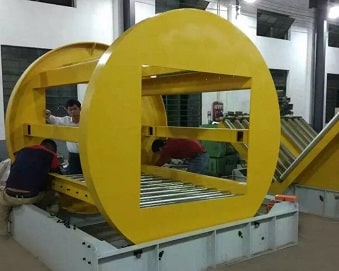
I know what you might be thinking. "My business is not in Brazil, and I do not pack meat." Please stick with me for a moment. I have spent my entire career in the world of heavy-duty steel coil packing. The principles of moving valuable, heavy products quickly, safely, and efficiently are the same everywhere. I was recently talking with a colleague about the challenges in these Brazilian industries. I saw immediate parallels to the problems we solve every day in steel mills and manufacturing plants. Let's break down exactly how this technology gets results. You will see how these lessons can apply directly to your own operations.
How Do Pallet Inverters Directly Boost Throughput in High-Volume Operations?
A single slow point in your production line can make everything else slow down too. Manual pallet switching is often that hidden bottleneck. The process is slow, needs several staff members, and stops the flow of your goods. Every minute spent manually re-stacking a load is a minute your product is not on a truck heading to a customer. In a busy environment, these minutes quickly add up to hours of lost productivity. This can lead to missed shipping deadlines and unhappy clients. A pallet inverter can change this. It turns a task that takes multiple people several minutes into an automated process that one person can do in less than 60 seconds. This instantly clears the bottleneck and helps your line produce as much as possible.
Pallet inverters directly boost throughput by replacing slow, manual handling with a very fast, automated process. These machines can invert and swap a full pallet in under a minute. This creates a continuous flow of goods, gets rid of production pauses, and helps logistics teams load trucks and containers much faster.
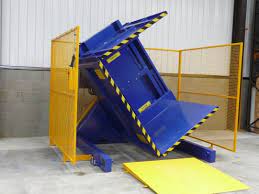
From Manual Crawl to Automated Sprint
Let's think about the old way of doing things. A forklift brings a pallet of finished goods to the shipping area. If the pallet is damaged or not the right type for the customer, the process stops. Two or three workers have to manually unstack every box from the old pallet. They set up a new pallet. Then, they have to carefully re-stack all the boxes onto the new one. This takes time. It costs labor. And every time a box is handled, there is a risk of dropping it or damaging the product inside. It's an inefficient and risky process that creates a major slowdown right at the end of your production line.
Now, imagine the automated way. The forklift operator brings the entire load to the pallet inverter. The operator pushes a button. The machine gently clamps the load, tilts it, and allows the old pallet to be removed. A new pallet is placed, and the machine brings the load back to its original position. The whole process takes less than a minute. The forklift driver can immediately take the corrected load to the shipping dock. The flow is continuous.
The Numbers Don't Lie: A Throughput Comparison
When I was building my own factory, I had to analyze every process. I learned that what you can measure, you can improve. The difference between manual and automated pallet handling is easy to see in the numbers. It’s a powerful example of how a smart investment in equipment pays for itself.
| Metric | Manual Pallet Exchange | Automated Pallet Inverter |
|---|---|---|
| Time per Pallet | 10–15 minutes | < 1 minute |
| Labor Required | 2–3 workers | 1 operator |
| Equipment Needed | 1-2 Forklifts + Manual Labor | 1 Forklift + Inverter |
| Throughput (Pallets/hr) | 4–6 | 40–60 |
| Risk of Product Damage | High | Very Low |
| Process Consistency | Low | High |
It's Not Just Speed, It's Consistency
This is a point that owners like Javier Morales, who run complex steel mills, understand very well. Success is not just about top speed; it's about predictable, reliable performance. Manual processes are unpredictable. One time it might take 10 minutes, the next it might take 20, depending on the workers and the product. This variability makes planning very difficult for systems like an MES (Manufacturing Execution System). Automation removes that variable. With a pallet inverter, you know that each cycle takes, for example, 58 seconds. Every time. This predictability is gold for production planning. It allows you to schedule your logistics with precision, ensuring trucks are not waiting and your production line is never stopped by a backup in the shipping area. It's a key part of achieving a high overall equipment effectiveness (OEE).
What Makes Pallet Inverters Essential for Hygiene and Quality Control?
Your product is perfect when it leaves the production line. It is clean, safe, and meets all quality checks. But then it gets loaded onto a dirty, splintered wooden pallet for shipping. Suddenly, contamination becomes a real risk. A single splinter, some dirt, or bacteria from a used pallet can ruin an entire batch of products. For industries like pharmaceuticals and meatpacking in Brazil, this is a massive problem. A rejected batch can cost hundreds of thousands of dollars. It can also cause huge damage to a company's reputation. You simply cannot afford to take that risk. Pallet inverters provide a perfect solution. They act as a "hygiene firewall." They let you easily and safely transfer your perfect products from your clean, internal pallets to cheaper, disposable wooden pallets for shipping. This ensures your quality standards are protected all the way to the customer.
Pallet inverters are essential for hygiene because they enable the seamless transfer of goods from internal, sanitized pallets to external shipping pallets without any manual contact with the product. This critical step prevents cross-contamination from outside sources. It ensures products, especially in the highly regulated food and pharma sectors, stay in a pristine and controlled state until they are shipped.
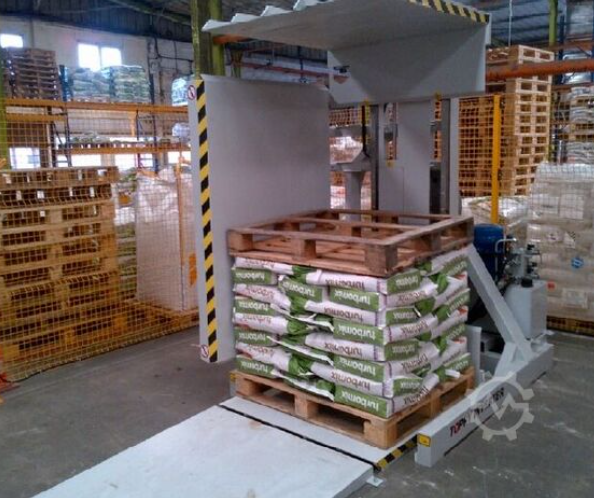
Creating a "Clean Zone" Barrier
In many modern factories, especially in food and pharma, there is a strong separation between the "clean zone" of production and the "dirty zone" of external logistics. Wooden pallets that come in on trucks have been everywhere. They can carry moisture, pests, dust, and bacteria. You never want those pallets entering your clean production or storage areas. A pallet inverter is often placed right at the boundary between these two zones. It acts as a gatekeeper. Products are manufactured and handled inside the clean zone on sanitized plastic or metal pallets. When it is time to ship, the load is brought to the pallet inverter. The machine transfers the product to a wooden shipping pallet, and only that shipping pallet leaves the facility. The clean, internal pallet never leaves the clean zone. This creates a simple but very effective barrier against contamination.
Application Across Industries
This principle of separating internal and external pallets is not just for food and pharma. It applies to any industry where product quality and cleanliness are important. The specific concern may change, but the solution is the same. I have seen similar needs in my own field of steel packing.
| Industry | Primary Concern | How Pallet Inverter Helps |
|---|---|---|
| Pharmaceutical | Sterility, preventing particle contamination | Transfers loads from sterilized pallets to shipping pallets at the cleanroom exit. |
| Meatpacking | Preventing bacterial cross-contamination | Moves product from washable, food-grade plastic pallets to one-way wooden pallets. |
| Electronics | Avoiding dust and electrostatic discharge (ESD) | Transfers sensitive components from ESD-safe pallets to standard ones for transport. |
| High-Value Steel | Preventing surface scratches and corrosion | Transfers polished steel sheets from specialized, protective pallets to low-cost wooden skids for shipping, avoiding contact with rough wood. |
More Than Just Hygiene: Quality Preservation
This is where the benefit extends directly to operations like a steel mill. Quality control is not just about being clean. It's also about preventing physical damage. A pallet can be damaged in many ways. A forklift tine can break a board. A heavy load can crack the structure. When a pallet is broken, the entire load becomes unstable. It could shift and fall during transport, destroying thousands of dollars of product. In the steel industry, a damaged skid under a multi-ton coil is a major safety hazard and a financial disaster waiting to happen. A pallet inverter offers a simple, safe way to rescue a load from a broken pallet. Instead of risky manual restacking, the entire load is securely clamped and transferred to a new, solid pallet in minutes. This is a practical, ROI-driven benefit. It reduces waste, prevents accidents, and protects your assets.
How Does Automation with Pallet Inverters Reduce Operational Costs and Improve Safety?
Your labor costs are always rising. Your insurance premiums for workplace injuries seem to go up every year. A major cause for both of these is repetitive heavy lifting, a common task in many warehouses and factories. A single serious back injury can lead to lost work time, expensive compensation claims, and a drop in team morale. While this is happening, you are paying multiple people for a manual task that adds no real value to your final product. Pallet inverters offer a direct solution. They automate this dangerous, repetitive work. They can turn a job that required two or three people into a safe, efficient task for a single operator. This directly cuts your labor costs and drastically reduces the risk of lifting-related injuries.
Automation with pallet inverters reduces operational costs by minimizing the manual labor needed for pallet handling, which lowers the associated wages and benefits. It significantly improves safety by eliminating the strenuous and physically risky task of manually lifting and re-stacking heavy goods, a leading cause of musculoskeletal injuries in industrial workplaces.
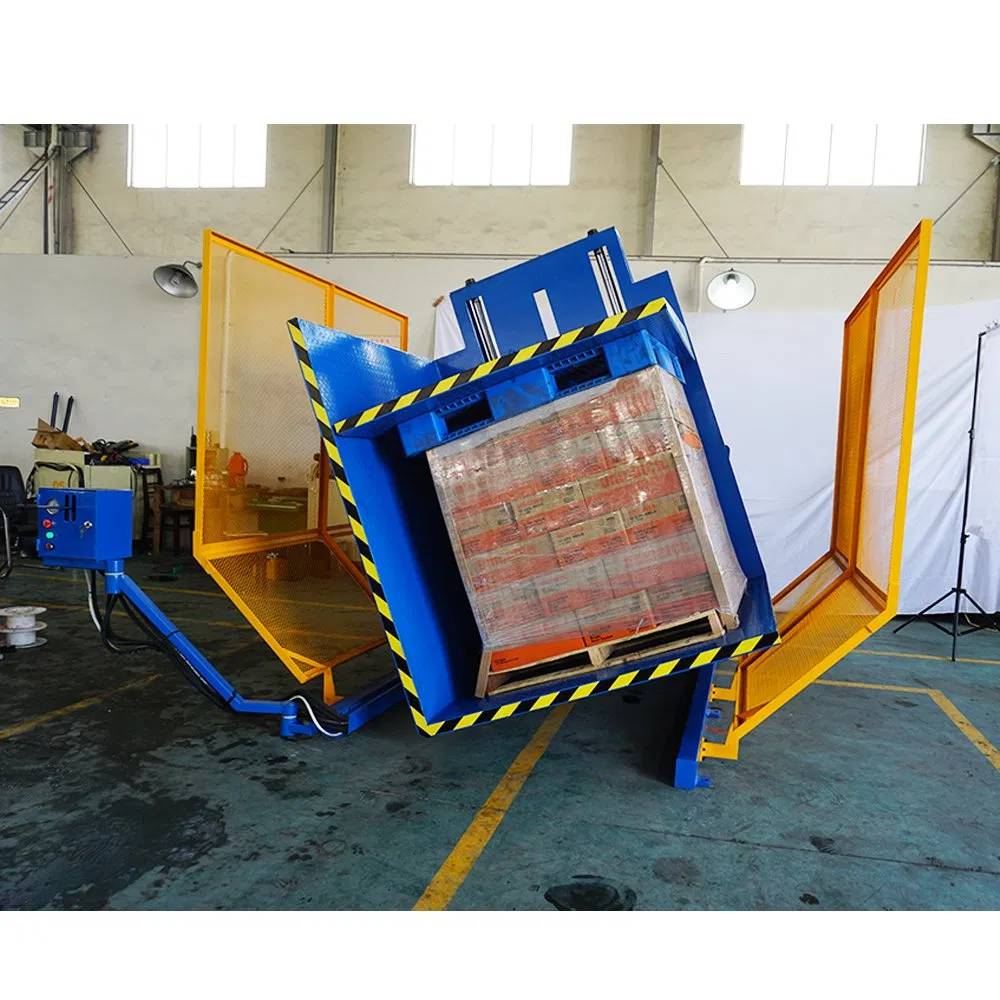
The Hidden Costs of Manual Handling
When I started my first factory, I had to watch every dollar. I quickly learned that the true cost of a process is often more than just the direct wages. Manual material handling is a perfect example of this. The visible cost is the salary you pay your workers. But the hidden costs are much larger, like an iceberg.
- Direct Costs: Wages, overtime pay, and benefits for 2-3 workers.
- Indirect Costs: Higher insurance premiums due to the high-risk nature of the work.
- Injury Costs: Worker's compensation claims, medical bills, and potential legal fees.
- Productivity Costs: Lost production time when an experienced worker is injured. The cost of hiring and training a temporary replacement. The time your supervisors spend on accident reports and administrative tasks.
- Damage Costs: The value of products damaged or dropped during manual re-stacking.
When you add up all these hidden costs, the manual process is far more expensive than it first appears. Investing in safety equipment like a pallet inverter is not just an expense; it is an investment in operational stability and lower long-term costs.
Calculating the Return on Investment (ROI)
For a practical business owner like Javier, every investment must be justified with a clear return. The ROI for a pallet inverter is often very easy to calculate and very compelling. You can make a simple table to see the savings. Let's imagine a scenario.
| Cost Category | Manual Method (Annual Cost) | With Pallet Inverter (Annual Cost) | Annual Savings |
|---|---|---|---|
| Labor (2 workers x $20/hr x 2080 hrs) | $83,200 | $0 (Workers reallocated) | $83,200 |
| Injury-Related Costs (Est. 1% of payroll) | $832 | ~$0 | $832 |
| Damaged Product (Est. 0.5% of value) | $5,000 | ~$500 | $4,500 |
| Total Operational Savings | $88,532 |
If the pallet inverter costs $60,000, the payback period is less than 9 months. For most high-volume operations, the payback is typically under 18 months, making it one of the most effective capital investments a factory can make.
A Safer Workplace is a More Productive Workplace
There is also a human element that is very important. When employees see that the company is investing in technology to make their job safer and easier, it boosts morale. It shows that the company values them as people, not just as labor units. This leads to higher engagement and lower employee turnover. It also allows you to reallocate your skilled workers to more valuable tasks. Instead of manual labor, they can focus on quality control, machine operation, or maintenance. This transition makes your entire team more skilled and your operation more efficient.
Why is Partnering with the Right Pallet Inverter Manufacturer Crucial for Success?
You have done the analysis and decided to invest in a pallet inverter. It seems like a great decision. You go online and find a cheap model from an unknown manufacturer that looks like it will do the job. The price is very attractive. But when the machine arrives, the problems begin. The integration into your existing line is a nightmare. The documentation is poorly translated, and you cannot get clear answers from technical support. When a simple part fails, you find out it will take weeks to get a replacement from overseas. Your cost-saving investment has now become a production-stopping headache. This is why choosing a manufacturer is about so much more than the machine itself. It is about choosing a partner. The right partner provides expert consultation, helps with seamless integration, offers reliable support, and shows a long-term commitment to your success.
Partnering with the right manufacturer is crucial because a pallet inverter is not a simple commodity you buy off a shelf. Your success depends on getting the correct equipment for your specific load type and weight. It requires seamless integration into your workflow and safety systems. It needs reliable after-sales support for maintenance and spare parts. You need expert advice on safety and compliance. These are all things that only a true strategic partner, not just a seller, can provide.
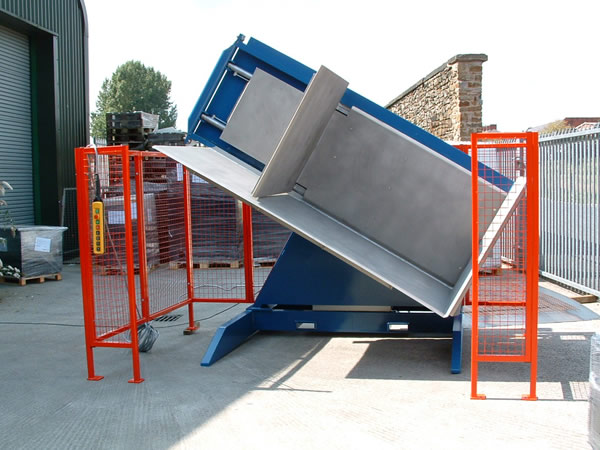
Beyond the Machine: The Value of a True Partner
This is a lesson I learned the hard way when I was building my own factory. I did not just buy machines; I built relationships with my suppliers. I needed to know that if my main wrapping line went down in the middle of the night, I could call someone who understood my business and could help me get running again. That is the fundamental difference between a simple supplier and a long-term partner. A supplier sells you a box. A partner sells you a result. A partner takes the time to understand your goals, your challenges, and your operational reality. They are invested in making sure the equipment delivers the value you expect. This is the kind of relationship that business leaders like Javier Morales look for, because they know that uptime and reliability are the keys to profitability.
Key Factors in Choosing a Manufacturer
When you evaluate a potential equipment provider, you should look beyond the price tag. You need to assess their ability to be a real partner. Here is a simple checklist I use.
| Factor | What to Look For | Red Flag |
|---|---|---|
| Consultation | Do they ask detailed questions about your load weight, size, product type, and speed requirements? Do they want to see your facility? | They offer a one-size-fits-all sales pitch without understanding your specific needs. |
| Customization | Can they adapt the machine to fit your limited space, unique product, or special workflow? | "This is the only model we have, take it or leave it." |
| Integration Support | Do they offer expert help to connect the machine to your conveyors, safety systems, and production software like an MES? | "We just ship the machine to your door. Installation is your problem." |
| After-Sales Service | Do they have a clear plan for support? Are spare parts readily available? Is technical help responsive and knowledgeable? | Vague answers about warranties and support. No clear contact for help. |
| Industry Experience | Can they show you case studies or provide references from demanding industries, maybe even one similar to yours? | They have no track record and cannot prove their equipment works in the real world. |
My Philosophy: A Total Solution
At SHJLPACK, our slogan is "TOTAL SOLUTION FOR WRAPPING MACHINE." But to me, this is much more than a slogan. It is the way I run my business and the core of my philosophy. It means we must understand our customer's entire process. We look at everything from the moment a product comes off the line to the moment it is secure on a truck. Whether it's a giant coil of steel or a fragile pallet of pharmaceuticals, the goal is always the same: provide a complete, reliable solution, not just a piece of hardware. This is the mindset you should look for in any equipment partner. It is the key to a successful investment.
Conclusion
Pallet inverters offer a clear path to higher throughput, better quality, and lower costs. The key is choosing the right technology and the right partner for your specific operational needs.


